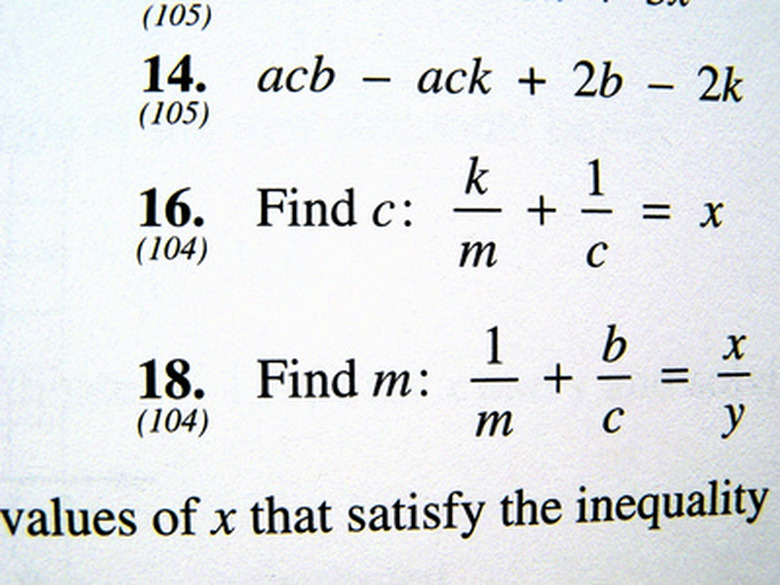How To Find The Domain Of A Function Defined By An Equation
In mathematics, a function is simply an equation with a different name. Sometimes, equations are called functions because this allows us to manipulate them more readily, substituting full equations into variables of other equations with a useful shorthand notation consisting of f and the variable of the function in parentheses. For example, the equation "x+2" could be shown as "f(x) = x+2," with "f(x)" standing for the function that it is set equal to. In order to find the domain of a function, you'll need to list all the possible numbers that would satisfy the function, or all the "x" values.
Step 1
Rewrite the equation, replacing f(x) with y. This puts the equation in standard form and makes it easier to deal with.
Step 2
Examine your function. Move all your variables with the same symbol to one side of the equation with algebraic methods. Most often, you will move all your "x's" to one side of the equation while keeping your "y" value on the other side of the equation.
Step 3
Take the necessary steps to make "y" positive and alone. This means that if you have "-y = -x+2," you would multiply the whole equation by "-1" in order to make "y" positive. Also, if you have "2y = 2x+4," you would divide the whole equation by 2 (or multiply by 1/2) in order to express it as "y = x+2."
Step 4
Determine what "x" values would satisfy the equation. This is done by first determining what values will not satisfy the equation. Simple equations, like the one above, can be satisfied by all "x" values, meaning that any number would work in the equation. However, with more complex equations involving square roots and fractions, certain numbers will not satisfy the equation. This is because these numbers, when plugged into the equation, would yield either imaginary numbers or undefined values, which cannot be part of the domain. For example, in "y = 1/x," "x" cannot be equal to 0.
Step 5
List the "x" values that satisfy the equation as a set, with each number set off by commas and all the numbers inside of brackets, like so: {-1, 2, 5, 9}. It is customary to list the values in number order, but not strictly necessary. In some cases, you will want to use inequalities to express the domain of the function. Continuing the example from Step 4, the domain would be {x < 0, x > 0}.
Cite This Article
MLA
Rudinski, Alexander. "How To Find The Domain Of A Function Defined By An Equation" sciencing.com, https://www.sciencing.com/domain-function-defined-equation-7375107/. 24 April 2017.
APA
Rudinski, Alexander. (2017, April 24). How To Find The Domain Of A Function Defined By An Equation. sciencing.com. Retrieved from https://www.sciencing.com/domain-function-defined-equation-7375107/
Chicago
Rudinski, Alexander. How To Find The Domain Of A Function Defined By An Equation last modified March 24, 2022. https://www.sciencing.com/domain-function-defined-equation-7375107/
